Di roccia, fuochi e avventure sotterranee
extra MAXXI
curated by Alessandro Dandini de Sylva
Monday closed
Tuesday to Sunday 11 am – 7 pm
Monday 8 December 11 am > 7 pm
Wednesday 24 December 11 am > 4:30 pm
Thursday 25 December closed
Wednesday 31 December 11 am > 4:30 pm
Thursday 1 January 11 am > 7 pm
Monday 5 January 11 am > 7 pm
Tusday 6 January 11 am > 7 pm
– for young people aged between 18 and 25 (not yet turned 25);
– for groups of 15 people or more;
– La Galleria Nazionale, Museo Ebraico di Roma ticket holders;
– upon presentation of ID card or badge: Accademia Costume & Moda, Accademia Fotografica, Biblioteche di Roma, Centro Sperimentale di Cinematografia, Enel (for badge holder and accompanying person), FAI Fondo Ambiente Italiano, Feltrinelli, Gruppo FS, IN/ARCH Istituto Nazionale di Architettura, Sapienza Università di Roma, LAZIOcrea, Palazzo delle Esposizioni, Amici di Palazzo Strozzi, Accademia Nazionale di Santa Cecilia, Scuola Internazionale di Comics, Teatro Olimpico, Teatro dell’Opera di Roma, Teatro di Roma, Università degli Studi di Roma Tor Vergata, Youthcard;
valid for one year from the date of purchase
– minors under 18 years of age;
– myMAXXI cardholders;
– on your birthday presenting an identity document;
– upon presentation of EU Disability Card holders and or accompanying letter from hosting association/institution for: people with disabilities and accompanying person, people on the autistic spectrum and accompanying person, deaf people, people with cognitive disabilities and complex communication needs and their caregivers, people with serious illnesses and their caregivers, guests of first aid and anti-violence centres and accompanying operators, residents of therapeutic communities and accompanying operators;
– MiC employees;
– journalists who can prove their business activity;
– European Union tour guides and tour guides, licensed (ref. Circular n.20/2016 DG-Museums);
– 1 teacher for every 10 students;
– AMACI members;
– CIMAM International Committee for Museums and Collections of Modern Art members;
– ICOM members;
– from Tuesday to Friday (excluding holidays) European Union students and university researchers in art history and architecture, public fine arts academies (AFAM registered) students and Temple University Rome Campus students;
– IED Istituto Europeo di Design professors, NABA Nuova Accademia di Belle Arti professors, RUFA Rome University of Fine Arts professors;
– upon presentation of ID card or badge: Collezione Peggy Guggenheim a Venezia, Castello di Rivoli Museo d’Arte Contemporanea, Sotheby’s Preferred, MEP – Maison Européenne de la Photographie;
limited seating; it is mandatory to arrive at the infopoint 15 minutes before the start time indicated on the ticket; the experience lasts approximately 45 minutes
limited seating; it is mandatory to arrive at the infopoint 15 minutes before the start time indicated on the ticket; the experience lasts approximately 45 minutes
MAXXI’s Collection of Art and Architecture represents the founding element of the museum and defines its identity. Since October 2015, it has been on display with different arrangements of works.

extra MAXXI
curated by Alessandro Dandini de Sylva
Monday closed
Tuesday to Sunday 11 am – 7 pm
Monday 8 December 11 am > 7 pm
Wednesday 24 December 11 am > 4:30 pm
Thursday 25 December closed
Wednesday 31 December 11 am > 4:30 pm
Thursday 1 January 11 am > 7 pm
Monday 5 January 11 am > 7 pm
Tusday 6 January 11 am > 7 pm
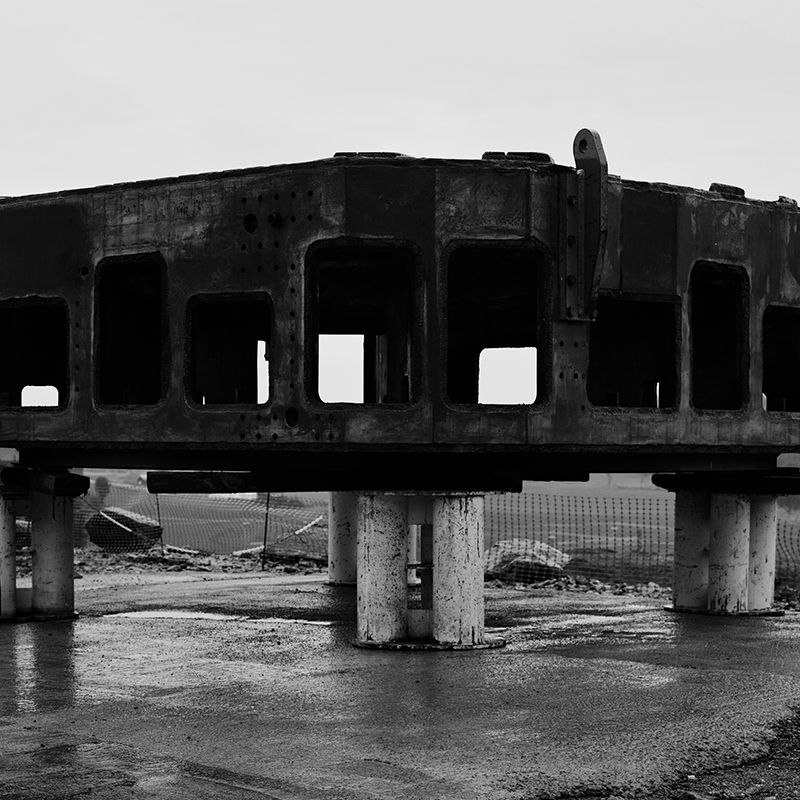
Fabio Barile - Oslo Follo Line #11
Oslo Follo Line High-Speed Railway Project
36 km mechanized excavation
135.000 precast segments
The Follo Line project in Norway consists of a new high-speed dual-track, 22 kilometres long, that will connect Oslo central station and a new hub for public transport in the city of Ski. The new railway tunnel is the longest ever excavated in Scandinavia and is designed to decongest the traffic in the south-eastern outskirts of Oslo, and to integrate the public mobility of the small towns around the capital. Follo Line is one of the most important high- speed railway projects in the world because of its technical complexity. It is also one of the first in Northern European history to feature a double tunnel created simultaneously with four Tunnel Boring Machines (TBMs).
“My work on geology is focused on the representation of time via the shapes of the landscape. The photography of the landscape thus becomes a philosophical tool with which to examine the natural processes that surpass our imagination, in the attempt to come to terms with a different perception of time. Over the course of my research, I have inevitably come up against themes such as stratification, interconnectivity, multidimensionality, and complexity. The history of geology has forced me to look at the landscape as a dynamic and complex system, to which a simplistic and linear vision cannot be applied. In my photographic campaign at Follo Line I tried to make this discontinuous vision emerge, in which woods, rock walls, cultivated fields, concrete casts, excavating machines, and various constructions seem to be thematically distant from each other, but are actually part of a single complex system that is constantly evolving.”
Fabio Barile (Barletta, 1980) centres his work on the study of complex phenomena, starting with the observation of the erosion of coasts and of the geological landscape. Over the years, he has developed a use of photography as a philosophical instrument to analyze reality. Since 2013, he has been investigating the intricate formation processes of the landscapes we live in, through geological evidence, experimentation with photographic materials and simulation of natural processes. In his most recent work, Works for a cosmic feeling (2018-ongoing), a collection of photographic projects that constitute a journey into interconnectivity, the artist uses photography as a stratigraphic tool and attempts to understand and portray reality, capturing the interaction between apparently distant scales, elements and times.
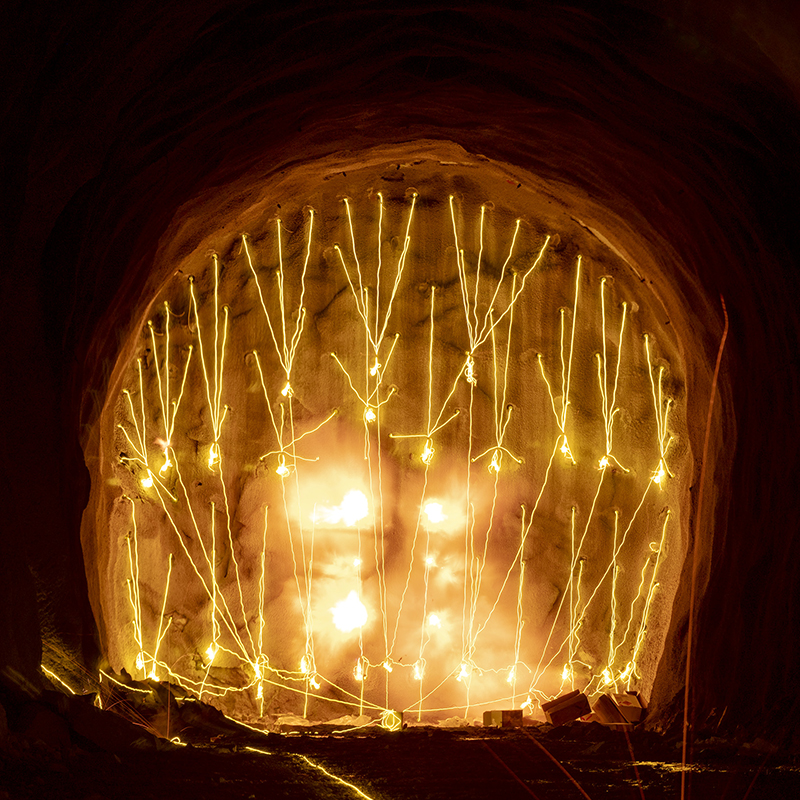
Andrea Botto - Brenner Base Tunnel #12
Brenner Base Tunnel Verona – Innsbruck High-Speed Railway
42 km mechanized excavation
170.000 precast segments
20 km conventional excavation
Being built under the Brenner Pass is what will one day become the longest high-speed underground rail link in the world: the Brenner Base Tunnel. The project is part of the Trans-European transport network TEN-T, nicknamed “the European underground”, and more precisely of the Scandinavian-Mediterranean corridor. The “Mules 2–3” section was started in September 2016 and it is the tunnel’s longest one: it includes over 17 of the 64 kilometres of the railway line that will run beneath the Alps. Once the new high-speed line has been completed, the time needed to cross the Brenner will be down to a third of the current travelling time. Once the “Mules 2–3” section has been finished, all the work on the tunnel in Italian territory will have been completed, joining Italy with Austria.
“My work at the Brenner Base Tunnel bears witness to a series of attempts to achieve an image that had never been seen before, the photograph of a “blast” in the tunnel that technical, logistic, and safety requirements made practically impossible. The shotfirer/photographer relationship is based on my over ten years of research into the use of explosives. There is a close relationship between photography and explosives, starting from the chemistry and specifically the nitrate, continuing with the parallel industrial and technological evolution, all the way to the philosophical and conceptual implications with regards to time, to the randomness and irreversibility of a process that once it is triggered cannot be stopped and that brings with it several levels of risk. There is no doubt an irrational component in trying to control a process that maintains a certain amount of randomness and uncertainty, but what upholds the experiment is the design structure and the pre-vision of the final results, which are also typical of photographic thinking”
Andrea Botto (Rapallo, 1973) uses photography as a section of the world, with the intention of revealing its complexity and stratifications. Key themes of his work are time, today’s constant transformations, and the unstable balance that governs the landscape, which he investigates through the aesthetics of destruction. From the very beginning, he conducted photo campaigns on construction sites and infrastructures of great environmental impact, integrating a traditional documentary approach with a close eye on both anthropological phenomena and on the dynamics of representation and staging. In 2008 he started an over decade-long research on the use of explosives, KA-BOOM (2008-ongoing), a project that documents controlled explosions and studies the possible interaction between them and photography.
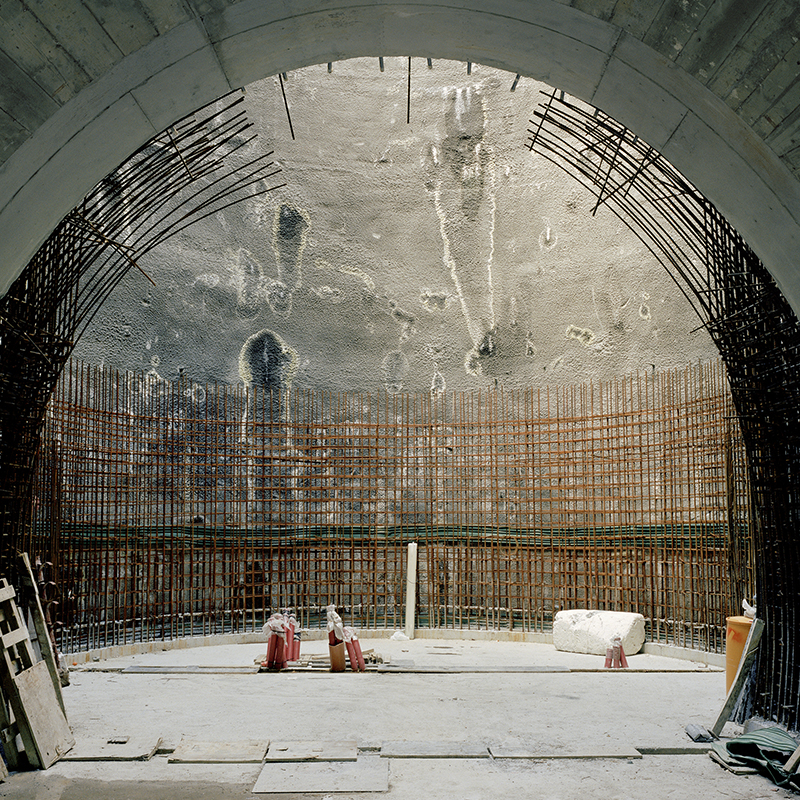
Marina Caneve - Athens Metro Line #7
Athens Metro Line 3 Extension Haidari – Piraeus Section
6,5 km mechanized excavation
30.000 + precast segments
6 stations
The Haidari–Piraeus extension of Athens Metro Line 2 stretches from Haidari, a residential district located in the western outskirts of the city, as far as the Port of Piraeus, ending at Dimotiko Theatro station. The project involves the construction of six new stations: Agia Varvara, Korydallos, Nikaia, Maniatika, Piraeus, and Dimotiko Theatre. Once completed, the new section of the Metro will be capable of transporting 135,000 passengers a day and will connect the main Greek port with Eleftherios Venizelos International Airport, reducing travelling time by 60 minutes. There will be an average of 23,000 vehicles less circulating per day, with a daily reduction of around 120 tonnes of CO2.
“The impressions of my first visit to the cavern at Victoria Cross greatly influenced my work, which in fact describes the construction site as though it were a territory on which an alien civilization had developed. In Bradbury’s Martian Chronicles the colonization of the planet is told based on a succession of exploratory missions that land on Mars: a group of explorers arrives on the planet and finds it is deserted, another group comes to terms with the signs left by the previous mission, in another story there is a visit to the houses and temples of a lost civilization. My photographic tale is organizedin a similar manner. I took the photographs as though I were moving about in unknown territory, abandoned by an alien civilization, where it is possible to observe the signs left by its disappearance. The marks on the stone, the technology, and the debris correspond to the three phases of development of the building site: the cavern, the tunnel, and the dismantling of the equipment. But as I was taking pictures of these three elements what I had in mind were footprints on the moon and the rocket-launching platforms.”
Marina Caneve (Belluno, 1988), uses photography as a means to explore and build knowledge, with a specific interest in environmental, social and cultural vulnerability. Her activity has developed through a multidisciplinary research based on the comparison of different perspectives, from the vernacular-naïve to the technological-scientific. By questioning the documentary nature of photography with an approach that reveals a strong contamination between different disciplines – such as geology, sociology and anthropology – in her project Are they Rocks or Clouds?(2019) she explored the construction of the collective memory of environmental disasters, focusing in particular on the Dolomites. She is the founder of CALAMITA/Á (2013-ongoing), a research platform that explores the themes of catastrophe, change, memory and politics.
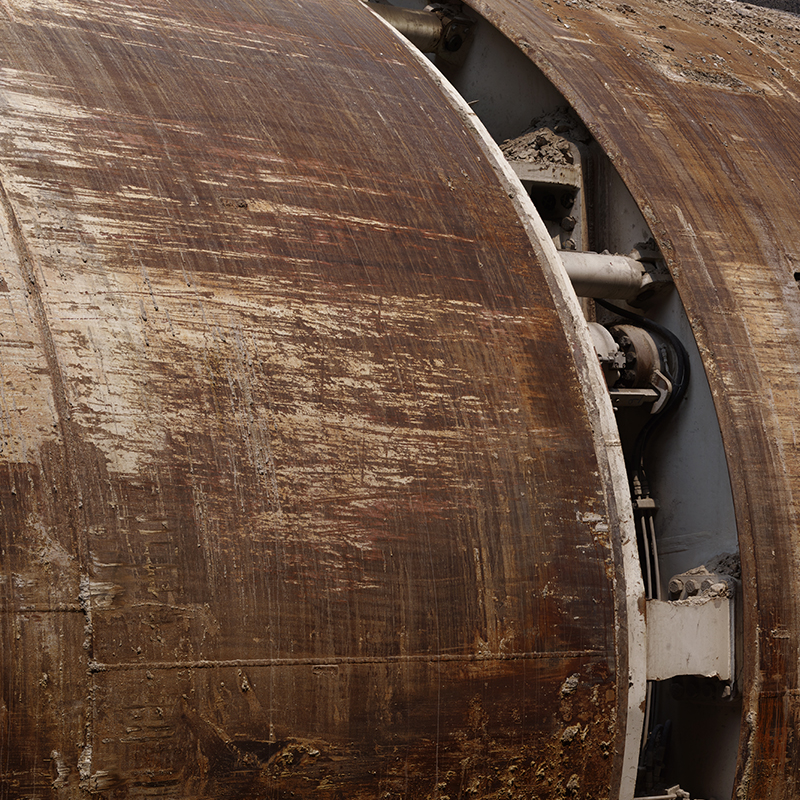
Alessandro Imbriaco - Sydney Metro City and SouthWest #5
Sydney Metro City And Southwest Crows Nest – Water Loo Section
30,5 km mechanized excavation
100.000 + precast segments
6 stations
Sydney Metro is the most imposing infrastructural project in all of Australia, and it involves the development and the building of the Sydney metro network. Ghella was commissioned to build the “Sydney Metro City & Southwest” section, which comprises 15.5 kilometres of new twin tunnels and the execution of civil works for the construction of six new stations: Waterloo and the new underground platforms of Central Station, Pitt Street, Martin Place, Barangaroo, Victoria Cross (North Sydney), and Crows Nest. What is unique about the new tunnels in the project is that they connect to the overhead infrastructure that exists in the areas of Chatswood and Marrickville, after which they travel below Sydney Harbour and some highly urbanized areas like the City Business District. The excavation of the stations of Pitt Street and Martin Place came about in the most populated and congested area of Sydney. Once the stretch is completed, it is estimated that the capacity of the metro will increase from about 24,000 to 40,000 passengers per hour, and that the trains will have an average frequency of one train every two minutes.
“Finding oneself in the midst of ancient places like Hanoi, and specifically inside building sites that are fully operative and engaged in the construction of works of that size, we need to questions ourselves about the confusion between novelty and value, between brutality and force, between appearance and meaning. Photography becomes a way to interpret and transform omething that is not easily understood and complex for a mere direct vision, in moments of reflection. The human figure is perhaps at the centre of the effort to offer the “cypher” of space, and, somehow, to permit people looking at the photographs to recognize a similar being in the middle of something that is as far away as it is perceptively complex. The “empty” space created by the building site is not just an intermediate phase. Rather, it, in turn, becomes an important moment that, among other things, will never come back. In this type of interpretation, photography also and inevitably acquires the status of the document of a unique condition and a moment that is constantly evolving and being renewed.”
Alessandro Imbriaco (Salerno, 1980) investigates social and political issues of our current age. The process underlying his research is developed through a multidisciplinary approach where personal research is accompanied by the design of collective works and participatory projects. On the one hand, his practice draws on the language of documentary photography, as in Corpi di reato (2011-2016), a visual archaeology of mafia phenomena in contemporary Italy, or Forza Maggiore (2017), a collective and multidisciplinary project on post-earthquake reconstruction. On the other hand, his strong sensitivity to the relationship between man and environment, his ability to find traces of it within the landscape, and his attention to the themes of memory and archiving, developed in projects such as Archivio Bellosguardo (2019-ongoing), make of his work a complex, interdisciplinary visual and artistic research.
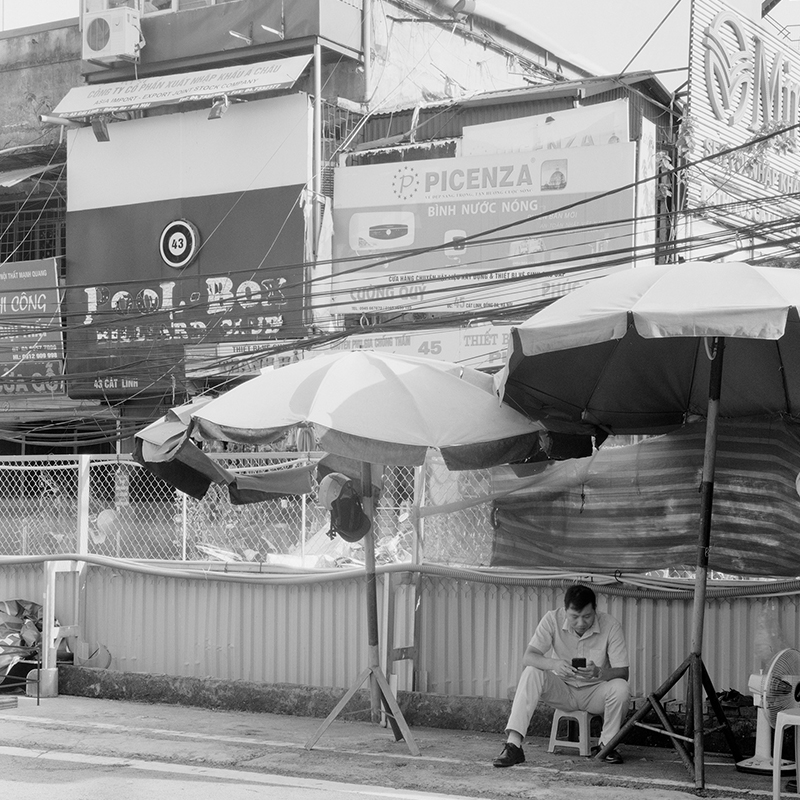
Francesco Neri - Hanoi Pilot Light Metro Line #14
Hanoi Pilot Light Metro Line Project Nhon – Hanoi Section
5,2 km mechanized excavation
20.000 precast segments
4 underground stations
The project for the Hanoi Pilot Light Metro Line 3 is part of the new transport system for the Vietnamese capital. The section that Ghella is working on, which is fully funded by the Asian Development Bank (ADB), is the longest and most important of the nine sections that the whole underground line is divided into. The overall railway network comprises eight lines of the underground and will be completed by 2050. Situated in the north of Vietnam, Hanoi rises up on a floodplain on the Red River, about 130 kilometres from its mouth. It is called the “city of lakes” because of the numerous bodies of water that can be found there. Over the course of the twentieth century it had a dizzying rate of demographic growth, especially after the end of the war between North and South Vietnam in 1975. The demographic boom brought about a massive process of urbanization and industrialization: today Hanoi is a metropolis with a population of over 8 million, aged an average of 27 years. To these are added commuters who use motorcycles, buses, taxes and bicycles. The underground project is part of the general plan of the Vietnamese Ministry of Transport, which aims to reduce the use of private transport and to improve the urban environment. When it is finally completed, the line will provide transport for 200,000 passengers a day.
“When thinking to Athens it is natural to think to archaeology. In archaeological digs we can find a consonance of nature, a contemporary way, and artefacts. I wanted to view the building site with this approach, as though I were observing an archaeological dig, analyzing the elements from broad and allencompassing visions down to the microscopic details. I arrived in Athens at a time in the life of the building site when the traces of the digging of the tunnel were fading. A backwards tunnelling, which I was able to approach right when it was being closed, seeking the signs in the design of the city, in the environment, and in the pre-existing urban fabric. The views are proof of this process. They do not just tell the story of the morphology of a territory characterized by dense urbanization, but they also let us glimpse traces of a complex work, its healing and disappearing beneath the skin, to become new lifeblood for the city.”
Francesco Neri (Faenza, 1982) investigates the photographic instrument and language, considering photography as an activity of discovery and research. His photographic research on portraits and social landscape has developed over the past fifteen years, starting from his studies at the Academy of Fine Arts in Ravenna with Guido Guidi. His photographic portraits are shaped by a fundamentally humanist view of the world. Through a close link with his territory, the artist, in series such as Farmers (2009-2021) or Trophies and Treasure (2017), manages to touch social, economic and universal themes, while at the same time exploring individual contexts and personalities. In coherently pursuing this research through a serial comparison, the artist has created a collection of exceptional documentary value.

The photographic projects of five authors, commissioned to photograph five major infrastructure works around the world.
Commissioned by Ghella, underground excavations specialised company, the 120 pictures on display were taken between 2019 and 2020 at five construction sites in Europe, the Far East and Oceania. The exhibition is introduced by historical images documenting the company’s activities from the 19th century to the 1950s. Views of cities and construction sites alternate with archaeological finds, cores and excavator components, while spectacular explosions interact with forests and rock formations. The dimensions, structure and physicality of the spaces, machinery and excavation materials convey the complexity of the site’s infrastructure and its nature as an organism in constant evolution.
Fabio Barile’s work on the railway tunnel that will connect Oslo to Ski juxtaposes images of intricate natural and artificial systems, coniferous forests, views of construction sites and new urbanisation. Andrea Botto’s photographs, taken in the tunnel that will unite Italy and Austria under the Brenner Pass document the firework activity, culminating in the spectacular explosion of the excavation face. Marina Caneve’s images of the metro line that will connect Athens airport to the port of Piraeus question the relationship between the city, contemporary design and historical memory. Alessandro Imbriaco’s photographs of details inside the gigantic mechanical moles used to build the tunnels running under Sydney Bay evoke atmospheres reminiscent of space exploration. Finally, Francesco Neri’s sequence of Hanoi’s first underground railway visually cuts through the city, rendering the construction site a zone of conflict and challenge to the city’s chaotic, unforeseen and organic environments.
in the header: Andrea Botto, Brenner Base Tunnel #14
fotografi in mostra
Fabio Barile
Andrea Botto
Marina Caneve
Alessandro Imbriaco
Francesco Neri